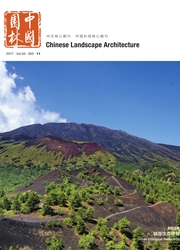

 中文摘要:
中文摘要:
作为“城市宜居环境风景园林小气候适应性设计理论与方法研究”课题的基础实验工作,以寻找风、湿、热等小气候要素与开敞空间布局间的关联特性为研究目的,以夏热冬冷地区上海市为研究对象,以1000~100000m2为研究尺度,对广场、滨水带和街道的风速、风向、相对湿度、空气温度及太阳辐射等小气候要素进行了实测。分析测试数据,研究广场空间平面布局及竖向、滨水带空间断面形式、街道空间形态与小气候要素之间的量化关系,进一步提出以调节改善小气候为导向的风景园林规划设计的技术对策。
 英文摘要:
英文摘要:
This research is a part of basic ifeld investigation of the project“Microclimate Responsive Design Theory and Method of Landscape Architecture in Urban Livable Environment”, and aims to ifnd out the correlation between microclimate elements—wind, humidity and thermal—and landscape space layout through measuring microclimate variables, including wind speed and direction, relative humidity, air temperature, and solar sunlight, for three types of open spaces—square, waterfront, and street (1 000-100 000m2)—in Shanghai City, China, where the weather is hot in summer and cold in winter. Through data analysis, the study explores the quantitative relationship of landscape space layout of square and street spaces and landscape section of waterfront with microclimate elements, and puts forward landscape planning and design strategies which are oriented to microclimate improvement.
 同期刊论文项目
同期刊论文项目
 同项目期刊论文
同项目期刊论文
 期刊信息
期刊信息
